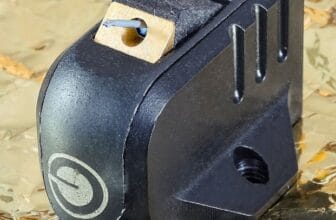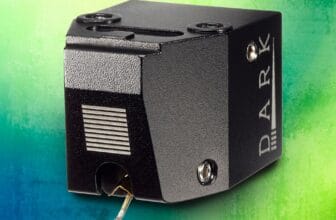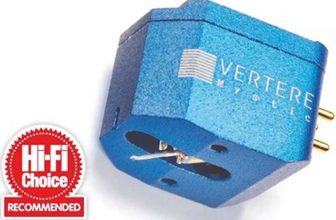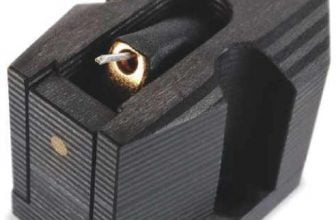ORTOFON QUINTET BRONZE CARTRIDGE Review – Bronze Age
Ortofon have updated their budget Quintet Bronze moving coil cartridge over time, Noel Keywood finds. Read our ORTOFON QUINTET BRONZE CARTRIDGE Review.
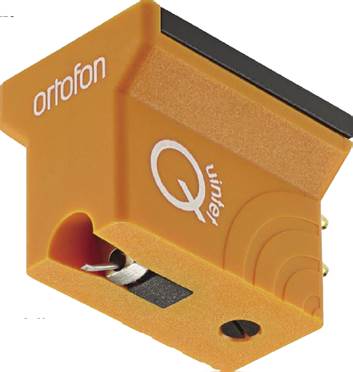
As music from LP continues to be popular, trying to get the best from vinyl is a contested place. There are no end of moving magnet artridges available, but more expensive moving coil (MC) cartridges are the place to go for a sense of greater stage depth. Trouble is price. Ortofon’s Quintet range of budget moving coils aims to make MC quality affordable. Here I’m looking at their Quintet Bronze.
We’ve reviewed the Quintet Bronze before, in our August 2014 issue. But times move on and Ortofon have subtly changed this popular cartridge in tonal balance, measurement shows, although subjectively it still is empathetic with the unit Tony Bolton reviewed long ago. In fact, after writing up my listening notes in an entirely different system, they were eerily like those of Tony’s – that I did not read in advance.
Because we use a Cadenza Bronze as a benchmark reference readers continually ask about its cheaper cousin – hence this repeat review. And it seems there is change – but no change. So let me explain.
The latest version has an ABS thermoplastic body as before, with screw threads above a blind hole in the body. This makes for easy fixing – no nuts required. Supplied were 2mm and 3mm long screws, the former with hex bolt heads and the latter with slots – curious. Also supplied
“full bodied, smooth and analogue-like than before”
were a stylus brush and Ortofon’s simple plastic stylus balance, good enough to get you going. There was no hex key or screwdriver in our box, but Ortofon claim to supply one.
At 9gm the Quintet Bronze is on the heavier side, but all arms can cope; it sits within their 4-1 2gm range. Parallel sides make for accurate alignment in the headshell – important to keep distortion down. Colour coded rear pins make connection easy enough and I experienced no difficulties here.
Tracking force is quoted as 2.1 gm-2.5gm and I used 2.4gm, a tad above the 2.3gm optimum quoted, because it was marginal on a ’torture’ test track. But this is no big issue: LPs rarely reach the levels of test LPs.
The stylus is a nude Fine Line, a step up from the simpler elliptical geometry used by the less expensive Quintet Blue but not as sophisticated as the Shibata tip of the Quintet Black. All the same, Ortofon’s Fine Line turned in a good result under measurement, tracing inner grooves with little loss.
The cantilever is a parallel sided aluminium tube, not the tapered tube of the Cadenza Bronze. In my experience tapered tubes are a tad more damped and better defined in dynamic impact, but only found on higher end designs.
Finally, moving coil cartridges do not have a removable stylus; they must be exchanged if damaged – a cost to be borne in mind. And a high gain MC preamp is needed, Ortofon quoting a load in excess of 20 Ohms (100 Ohms is standard). They also offer a step-up transformer to suit an MM input.
SOUND QUALITY
I fitted the Quintet Bronze to our SME309 arm, mounted on a Timestep Evo modified Technics SL-I2I0 MkII turntable. It fed an Icon Audio PS3 Mk2 valve phono stage with MC input transformers for ultra-low noise. This fed our Creek Evolution I00A transistor amplifier connected to Martin Logan ESL-X hybrid electrostatic loudspeakers, through Chord Company Signature Reference cables.
Firstly, and a little surprisingly, I noticed slight hum at high volume. Turned out the Creek’s mains transformer was inducing hum into the Quintet Bronze one shelf above, so it is hum sensitive and needs to be kept well away from mains transformers. With positioning corrected there was total silence, as expected when using a pre-amp with input transformers.
Spinning Sing Sing Sing, from Big Band Spectacular by the Syd Lawrence orchestra – a fabulous recent direct-cut to vinyl from Chasing the Dragon – the opening drum sequence was smooth and clean, having a nice svelte quality. The orchestra kicked in with blaring trumpets and trombones sounding rich and fruity. The sonic balance was obviously mild and smooth, easy going yet refined. Vinyl surface noise, ticks and pops were seemingly absent and the Syd Lawrence Orchestra nailed it in front of me. This is a live performance from experienced musicians and the Quintet Bronze brought it into the room with alacrity. There wasn’t quite the bass weight and definition of the Cadenza Bronze that we use as a reference, but I can use the term “lovely” all the same.
Cartridges must be auditioned on inner grooves to assess stylus geometry and here, with American
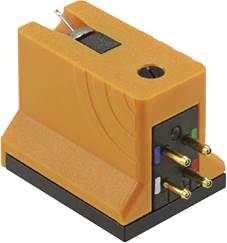
The rectangular body with parallel sides may not look elegant, but it is easy to align accurately in a headshell, without skew, minimising distortion.
The current model has an adjustment screw for final production alignment that improves performance, our measurements showed.
Patrol, the stylus dug deep, a trumpet solo coming over as clear and crisp. The orchestra remained composed and clean to the very end, a final cymbal crash being well resolved, if mildly presented.
Another inner groove performance, this time from Rosella Caporale singing Time to Say Goodbye, from the LP Two Countries One Heart. Her vocals were smooth and her final sustained high came across with confident power – a lovely performance. And superb from LP inner grooves.
What I was hearing from this cartridge was an analogue delivery set apart from what we hear from CD. No edginess, no shimmer, just a lovely sense of body and refinement.
A warm smooth balance is beguiling, but Rockers may want a bit more bite – and this was absent. The Quintet Bronze was superb with Neil Young’s After The Goldrush, where it held vivid highs from his guitar strings in check, but with Mark Knopfler’s True Love Will Never Die, from Kill to Get Crimson, the lush sound of the recording was “enhanced in lushness” shall I say. Strummed guitar chords were sweet though, and surface noise low.
Methinks Ortofon have made the latest Quintet Bronze sound more full bodied, smooth and analogue-like than before. It has great stage depth, as you’d hope from a moving coil, and makes a powerful statement for LP sound.
Lovely and gorgeous! Everything you could wish for from LP, if without the Cadenza’s bass punch.
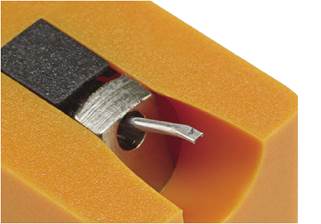
An aluminium cantilever, fitted with nude Fine Line stylus on a square shank, for accurate alignment and faithful tracing of high frequencies, especially on inner grooves.
CONCLUSION
Ortofon’s budget Quintet Bronze moving coil cartridge offers a fine example of vinyl loveliness. It is supremely smooth in sound, full bodied and deep in sound stage. Not fast or sharp, it veers more toward a balance that suits classical music, vocals and easy Rock. With a stylus that gets the best from inner grooves this is a moving coil that offers a great analogue experience. I just relaxed and enjoyed it. Some might want their ears tingled at top a bit more though.
MEASURED PERFORMANCE
Frequency response of the Quintet Bronze, using a JVC TRS-1007 test disc, shows a smooth roll down in output toward high frequencies, measuring -1dB at 10kHz and -5dB at 20kHz.
On inner grooves (red trace) the Fine Line stylus introduces little tracing loss, just -1dB at 15kHz, so tonal balance changes little here.
The latest Bronze has an adjustment screw underneath and this has improved results, vertical tracking angle now measuring 25 degrees. As a result vertical distortion was lower, falling from 5% to 2.4% (CBS STR-112 test disc).
Distortion on lateral modulation remained as before at around 1%, a normal enough result.
Channel balance was better and separation a high 30dB (Shure TTR-109 test disc).
Tracking was good at low frequencies (CBS STR-112 test disc) and fair in the mid-band (1kHz, B&K2010 test disc) as before. Output measured 0.6mV at 5cms/sec rms.
The latest Quintet Bronze measured
well all round, being tidied up over earlier versions. It does have falling upper treble though, that will give it a subjectively mild balance.
Tracking force 2.3gms
Weight 9gms
Vertical tracking angle 25degrees
Frequency response 20Hz – 10kHz
Channel separation 30dB
Tracking ability (300Hz) lateral 63pm
vertical 45pm
lateral (1kHz) 16 cms/sec.
Distortion (45pm) lateral 1%
vertical 2.4%
Output (5cms/sec rms) 0.6mV
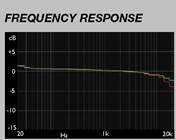
ORTOFON QUINTET BRONZE
EXCELLENT – extremely capable.
VERDICT
Read our MOVING-COIL CARTRIDGES GROUP TEST
Henley Audio
+44 (0)1235 511166 www.henleyaudio.co.uk


